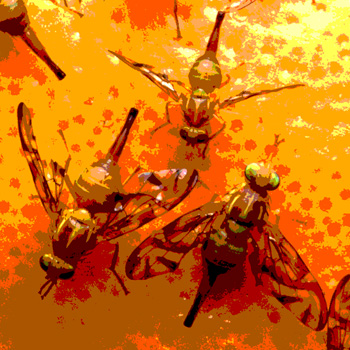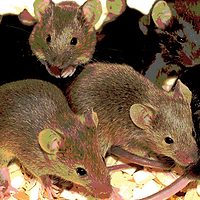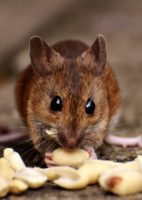Last week, you may have watched the pest control technician from your contract provider check the positioning of the mechanical rodent traps in and around your food processing plant. You also check the traps, satisfied that they are spaced every 10 ft. as outlined in your company’s sanitation program policies and as agreed to in the contract with the pest control company. A few days later, a third-party auditor enters the plant to conduct a routine sanitation and Good Manufacturing Practices (GMP) audit. The auditor notes in his report that the rodent traps are not adequately spaced and suggests they should be placed every 20 ft.
Before you can relay this information to the pest management provider (PMP), another audit is conducted at the request of one of your largest retail customers to verify that your food safety and sanitation programs meet its standards of doing business. This auditor states that the rodent traps should be 15 ft. apart and further, suggests that they are not placed in the appropriate areas. Meanwhile, plant personnel are moving these traps back and forth, trying to bring them into compliance. When your PMP next visits the plant, you enlist his help, only to find that there is no standard for placement of rodent traps to avoid constantly moving the devices, which is probably reducing their effectiveness.
If you are a sanitation, food safety or quality assurance professional working in a food processing or handling facility, this scenario likely isn’t going to surprise you. Unfortunately, there are no set standards for pest management in food plants—and placement of rodent traps is just one component of many in the typical pest control audit checklist. The U.S. Food and Drug Administration (FDA) GMP guidelines are highly generalized, stating that food companies must do whatever is necessary to prevent product adulteration or potential adulteration but without much specific detail. Food companies set their own corporate standards, which may vary from plant to plant within that organization depending on the type of product manufactured, the site and location of the facility and other factors affecting sanitation. To further complicate matters, third-party auditing firms have their own guidelines and protocols, which may or may not be consistent with the food company’s guidelines. Add to this the fact that PMPs routinely take training and recertification courses in which they learn standards that may or may not sync with client or third party auditor policies and you’ve got a recipe for a fairly confusing situation when it comes time to effectively implement pest control protocols in the food plant.
As part of the food safety and quality assurance team, you know how important the third-party and in-house auditing scores are to your organization in verifying, maintaining and improving the plant’s sanitation, GMP and Hazard Analysis Critical Control Point (HACCP) systems. It follows that it is important that plant managers and their PMPs know exactly what the rules are when it comes to the pest management aspect of the sanitation program. However, at this point, there are no rules, so at the recommendation of its member PMPs, the National Pest Management Association (NPMA) recently began to build a coalition of experts from PMP companies, third-party audit firms, trade organizations and food companies to address the issue. With this task force in place, NPMA aims to provide solutions to this challenge.
Searching for the Science
A few years ago, NPMA’s Commercial Division Steering Committee, a subset of the association’s membership PMP companies that service commercial and industrial facilities such as food manufacturing plants and foodservice outlets, identified the development of a set standards for pest management in food plants as an important objective. At that time, NPMA member companies servicing these food industry accounts reported frequently encountering problems due to a lack of uniformity in pest control protocols. The committee decided to invite several leading third-party auditing firms and the Food Products Association (formerly the National Food Processors Association) to work with NPMA in an advisory role to develop cohesive, practical standards for pest management. AIB International, ASI Consultants, NSF/Cook & Thurber, Silliker Inc. responded in the affirmative, with FPA agreeing to monitor the group’s progress and provide review of the draft standards since the third-party auditors in the group administer that association’s Food-SAFE audit program.
The steering committee also enlisted the support of two other groups: the Association of Operative Millers, which has a well-established set of pest control standards, and a multinational food manufacturer/retailer that operates thousands of food processing and retail outlets, to provide feedback as the standards are drafted to ensure that the protocols established will indeed provide a tangible benefit to food operations.
In September 2004, members of the NPMA Commercial Steering Committee, representatives from AIB, ASI, Silliker, NSF/Cook and Thurber, and pest management company McCloud Services, met to discuss standardization of pest management requirements in food facilities. The group worked on the draft outline from the committee and developed a revised draft outline based upon input from all groups. After review and approval by all groups, it was decided that NPMA will take the lead in developing food industry standards in a standards form using science-based requirements where possible. The group also recommended that the standards are flexible enough, especially on the actual pest management plan, to accommodate local needs and unique operations such as organic processing and handling facilities.
Although the committee solicited scientific information that could be used to develop science-based standards, little was available in the form of studies or research conducted by academic institutions or other industry research organizations. Some studies were available from private companies, but no bona fide third-party data was submitted. The committee continues to solicit credible data or studies as the standardization effort progresses; however, in the meantime, the group will continue to draft the initial standards as appropriate based on the coalition’s best judgment.
A Blueprint for Harmonization
In outlining an initial draft of standardized food industry pest management standards, the committee is focusing on several key areas, including personnel, pest management plans, communications, recordkeeping and contracts, and unique operations.
Personnel. It is important that pest management provider personnel policies are implemented in compliance with food industry best practices and regulatory mandates. For example, as part of complying with the provisions of the Public Health Security and Bioterrorism Preparedness and Response Act of 2002, food companies have instituted basic security measures with which contracted PMPs and other visitors to the plant need to comply. While many pest control technicians who work in food plants have experience dealing with these security measures, it is possible that small-sized or seasonally operated food manufacturing facilities do not have stringent protocols in place. By standardizing proper identification, photo ID and criminal background checks in compliance with federal and facility standards for PMPs, food companies gain added assurance that pest control technicians entering the plant are cleared to do so from a security standpoint.
Other proposed personnel-related standards for pest control technicians include ensuring that PMP staff practices are in compliance with the food company customer’s personnel policies, safety rules and GMPs, and setting minimum training, certification or credential standards for technicians.
Pest Management Plan. The committee identified several components of the pest management plan for which protocols might be standardized for the benefit of all stakeholders. These include rodent, crawling insect, flying insect and bird/wildlife programs covered in the typical pest management plan. For each of these areas, the PMP would base program plan development on the plant history, existing and potential pest pressures (given site location, climate, and so on) and account sensitivity (i.e., type of processing/product manufactured, whether containers or processing lines are typically sealed or open, etc.) for a given facility.
Creating uniformity in rodent control procedures, for example, would include creating standards for proper spacing of mechanical traps and other stations, rules for types of baiting and monitoring programs to be used in specific food facilities, and steps for conducting incoming goods inspections for pests. In crawling and flying insect pest management plan programs, standards will be set for structural pests, stored product pests and occasional invaders. For example, the flying insect program would include a standard for placement of insect light traps at a 5 ft. minimum from food contact surfaces.
The committee is also considering standards for the use of pheromones as a monitoring tool; weed control; sanitation monitoring as part of reporting; and exclusion methods and as part of reporting as a maintenance item. The group is also looking at standards for what kinds of recommendations should be made by PMPs as a result of their observations while in the plant, and to whom these should be made. For example, if the PMP notices possible pest problems near the dumpster or inspection aisle, is leaving a note for the quality assurance contact enough or should the technician be required to verbally inform the contact while on site? Finally, the group proposes that the pest management plan standard require annual educational programs for key facility personnel, at minimum, to provide employees with specific information on steps to take and who to contact if they see a pest in or around the plant.
Communications. Standardizing communication formats and contact procedures between pest management companies and food plants is another goal identified by the NPMA committee. Items under discussion include the forms used by pest management companies, and if barcoding is used, whether it can be standardized. The group is also considering what types of standard personnel and QA communications information should be in place, such as identifying the main plant contact and quality assurance troubleshooter who should be contacted if a problem arises.
Recordkeeping and Contracts. The committee is also reviewing what should be in a PMP-food company contract because what is included in this agreement can have far-reaching effects for both parties. The group envisions a list of 10 key points that should be included in contracts, including frequency of visits, scope and term of contract, equipment and product storage, recordkeeping, emergency calls, pest control products that will be used and notification of product changes, service records issued, reviewed with and signed by customer contact and pest control technician, and contact person at the facility.
Standardizing pest management program records is another important area of consideration. Such records would include:
• Labels and MSDS (all products used in the interior must be labeled for food processing areas)
• Pest log
• Copy of certification, license to operate pest management business
• Insurance certificate
• Service protocols and SOPs
• Procedures
• Pest sighting log
• Pest activity records including rodent
• Treatment records
• EPA registration number
• Product
• Target pest
• Rate of application or % concentration
• Time of application
• Date
• Lot number
• Signature of tech
• Notes/observations
• Trends
• Pest monitoring map for devices
With regard to the latter two items, for example, standardized records would allow PMPs to record what they observe in such a way that trends can be more easily identified to enable the development of a blueprint for adequate and effective placement of pest control devices.
Organic Facility Pest Programs. While there is much overlap in the strategies employed in organic and non-organic production facilities, the principle focus for organic facilities is preventing contamination of the organic product and/or organic ingredients as mandated by the U.S. Department of Agriculture’s National Organic Program (USDA NOP). Since pest management practices and procedures that are permitted in an organic-certified facility differ from conventional food plant operations, the committee identified the need to develop standards that will also cover requirements as outlined in NOP 205.271 (see box below). Such standards will ensure that PMPs gain a good understanding of the requirements for organic processing facilities, which can lose their organic certification if proper pest control practices and documentation do not meet the NOP mandate.
Moving Forward
The NPMA Commercial Steering Committee and special advisory group continues to work on developing these pest management standards with a view toward keeping them general in order that a broad range of individual food facilities can implement them for their specific needs. The standards will be designed as a benchmark that PMPs, quality asssurance and food company management, third-party auditors and regulatory inspection officials can apply to gain efficiencies and improved pest management to enhance food safety and sanitation in the processing environment. The committee welcomes input from industry and research organizations, especially data from science-based research to provide guidance as standards development progresses. The group’s aim is to not only develop guidelines that are beneficial for the food industry and the other parties concerned but also to develop standards that have as much scientific justification as possible from credible sources.
Greg Baumann is the Director of Technical Services for the National Pest Management Association, a 70-year-old organization representing the structural pest management industry worldwide. He is a national consumer advisor on pest management, and in particular, answers homeowner questions on all types of pest issues via NPMA’s consumer-oriented website, www.pestworld.org. As director, he is responsible for all aspects of technical publications, services and training, as well as coordinating the functions of the Technical, Residential, Commercial and Wood Destroying Organism committees.
Baumann’s pest management experience spans 27 years from the residential to the commercial setting, with particular focus in such areas as food protection and wood-destroying organisms. Prior to his work with NPMA, Greg maintained positions in the pest management industry in the U.S. and Canada. His experience has included pest management quality assurance functions for numerous divisions of the Hershey Foods Corp., including restaurants, factories, residential structures and commercial buildings.
Can Your Pest Management Audit Be Simplified?




